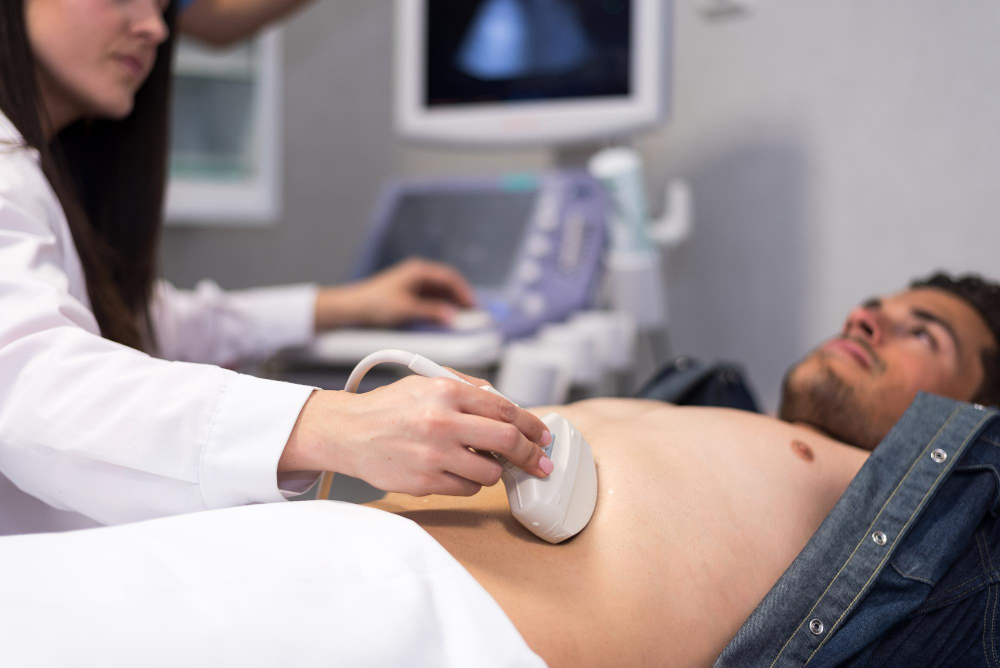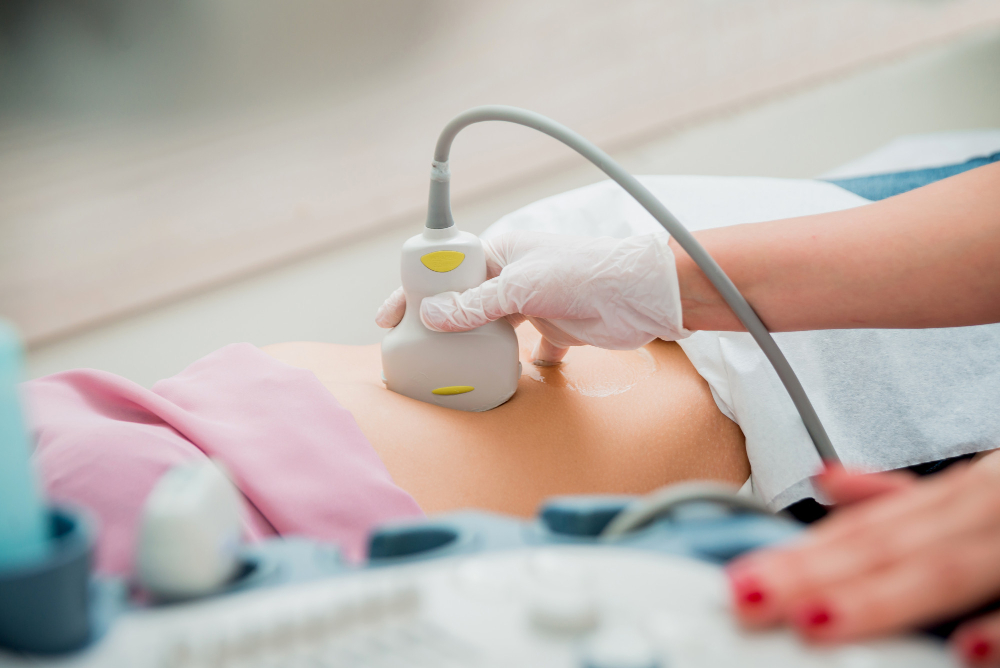Please click here to view Cardiac Screen's preparations for containing Corona Virus
Balppa House, 57-61 Newington Causeway, London SE1 6BD
Abdominal Ultrasound
A consultation with a cardiologist
Ultrasound is used to help diagnose a variety of conditions, such as:
-
Abdominal pain or distention.
-
Abnormal liver function.
-
Enlarged abdominal organ.
Abdominal Ultrasound is performed to evaluate:
KIDNEY:
One of the two organs that excrete the urine. The kidneys are bean-shaped organs (about 11 cm long, 5 cm wide, and 3 cm thick) lying on either side of the backbone
LIVER :
The largest gland of the body, lying beneath the diaphragm; it is of irregular shape and weighs from 1 to 2 kg (2 to 4 pounds). It secretes the bile and is also of great importance in both carbohydrate and protein metabolism.
GALL-BLADDER:
Pear-shaped receptacle on the inferior surface of the liver, in a hollow between the right lobe and the quadrate lobe; it serves as a storage reservoir for bile.
PANCREAS:
A gland that produces several hormones and secretes digestive enzymes, or proteins that acts as a catalyst for the breakdown of food, through the pancreatic duct that connects the gland to the intestine. The pancreas also secretes hormones into the blood to regulate sugar metabolism of the body.
SPLEEN:
A large vascular lymphatic organ lying in the upper part of the abdominal cavity on the left side, between the stomach and diaphragm. It is a blood-forming organ in early life and later a storage organ for red corpuscles and platelets; because of the large number of macrophages, it also acts as a blood filter.
ABDOMINAL AORTA:
Part of the aorta, the largest artery in the body; it supplies oxygenated blood to the abdominal and pelvic organs and legs.


Pricing
From only £290.00
Abdominal Ultrasound Scan Test is Available at a Special Reduced Rate!
Location
Abdominal Ultrasound Scan is available at
The Medical Specialist
Balppa House
57-61 Newington Causeway
London
SE1 6BD
Appointments
Same Day Appointments
You can have quick access with same day appointments.
Self Referral
If you are self-referral, our staff would be happy to get a brief history of your symptoms and advise you appropriately with what you will require and which consultant you will need to be booked with.
Contact
Please contact us by clicking the button below, or speak directly to one of our dedicated Patient Care team directly on 020 7403 5294
Cardiac at Home Services
Our unique cardiac at home service means we come to you to perform this test in the comfort of your home.
Do You Qualify?Client Reviews

Price From only £290.00
Abdominal Ultrasound Scan
A consultation with a cardiologist















